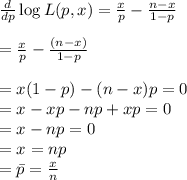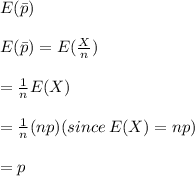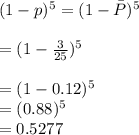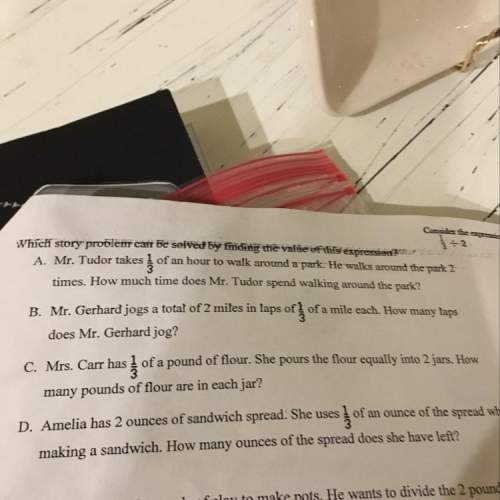
Mathematics, 11.03.2020 05:30 nathanstern21
A diagnostic test for a certain disease is applied to n individuals known to not have the disease. Let X = the number among the n test results that are positive (indicating presence of the disease, so X is the number of false positives) and p = the probability that a disease-free individual's test result is positive (i. e., p is the true proportion of test results from disease-free individuals that are positive). Assume that only X is available rather than the actual sequence of test results.
(a) Derive the maximum likelihood estimator of p.
If n = 25 and x = 3, what is the estimate?
(b) Is the estimator of part (a) unbiased?
(c) If n = 25 and x = 3, what is the mle of the probability (1 - p)5 that none of the next five tests done on disease-free individuals are positive? (Round your answer to four decimal places.)

Answers: 1


Other questions on the subject: Mathematics

Mathematics, 21.06.2019 14:10, javier04052000
Rachel reads 1/5 of the pages of a book plus 12 pages on the first day. on the second day, she reads 1/4 of the remaining pages plus 15 pages. on the third day, she reads 1/3 of the remaining pages plus 18 pages. on the fourth day, she reads the remaining 70 pages. how many total pages are in the book?
Answers: 2



Mathematics, 21.06.2019 23:30, abell23000
Afriend of mine is giving a dinner party. his current wine supply includes 10 bottles of zinfandel, 8 of merlot, and 11 of cabernet (he only drinks red wine), all from different wineries. (a) if he wants to serve 3 bottles of zinfandel and serving order is important, how many ways are there to do this? ways (b) if 6 bottles of wine are to be randomly selected from the 29 for serving, how many ways are there to do this? ways (c) if 6 bottles are randomly selected, how many ways are there to obtain two bottles of each variety? ways (d) if 6 bottles are randomly selected, what is the probability that this results in two bottles of each variety being chosen? (round your answer to three decimal places.) (e) if 6 bottles are randomly selected, what is the probability that all of them are the same variety? (round your answer to three decimal places.)
Answers: 3
You know the right answer?
A diagnostic test for a certain disease is applied to n individuals known to not have the disease. L...
Questions in other subjects:



Chemistry, 17.10.2020 21:01

Mathematics, 17.10.2020 21:01



History, 17.10.2020 21:01

Social Studies, 17.10.2020 21:01

English, 17.10.2020 21:01







 , the maximum likelihood estimate from part (a) is an unbiased estimator.
, the maximum likelihood estimate from part (a) is an unbiased estimator.
 .
.
 , the MLE of p can be used.
, the MLE of p can be used.






